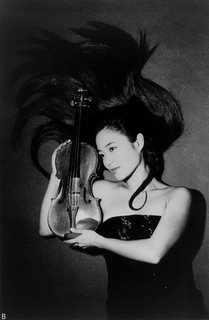Critic’s Notebook: Yannick Nézet-Séguin and the Orchestre Métropolitain visit Vienna
C.Saint-Saëns, Piano Concertos 1 & 2 Alexandre Kantorow, J.J.Kantorow, Tapiola Sinfonietta BIS SACD |
C.Saint-Saëns, Piano Concertos 3-5 Alexandre Kantorow, J.J.Kantorow, Tapiola Sinfonietta BIS SACD |
Montreal’s Orchestre Métropolitain on European Tour, showing off its symbiosis with Yannick Nézet-Séguin
As the second orchestra in Montreal, the Orchestre Métropolitain hasn’t got it easy. Few North American cities have two prominent orchestras; fewer still have two fine concert orchestras. But the music director who started his grand career with this band has remained loyal to his first love – and now they get to punch above their weight and fill (with a little help from the presenters) large halls on their European tour, hitting Brussels, Paris, Vienna, Hamburg, and Baden-Baden. To put this into European terms: It’s as if Christian Thielemann had always also remained at the helm of the Nuremberg State Philharmonic and now took them on a grand pan-Asian Richard Strauss Tour.
It’s heartening, really, and it makes you want to root for that 25-year collaboration that resulted, some six years ago, in a lifetime contract for Yannick Nézet-Séguin. And with that quantum of kindness in your heart, you might find that the buttery phrasing and the lavish touch in Maurice Ravel’s La valse do have a certain appeal, making the music (including much of the rest) sound a bit like those orchestras you seem to remember from old black and white movies. Nothing is overly subtle with Nézet-Séguin – even, paradoxically, the many finer points he has the orchestra perform aren’t. And therein lies much of what makes performances with the compact, energetic little man – 70% torso and 90% charisma – so consistently compelling in concert. So if you can live with music-as-entertainment, heart-on-sleeve emoting, and signaling emotional turns like a semaphore on amphetamines, what’s not to love?!
Of course, you could always revert to sneering quietly: “That’s not how it’s supposed to go.” And even though it might be tough to coherently argue what “supposed to” means, in this context, you wouldn’t be entirely wrong. Certainly not when it comes to the Tchaikovsky Pathétique, which was programmed for the second half. Firstly, there’s something old-school brazen and populist to that sort of programming. Perhaps that makes it cool again; in any case, it’s certainly effective. A Charles Ives Symphony might have looked smarter on paper – but it wouldn’t have gotten as many asses into the seats of the Wiener Konzerthaus on Wednesday night, nor out of them, again, when it came to jubilation. Taking the symphony by its nickname, YNS conducted it as his red-soled, Swarovski-encrusted buckled loafers might have suggested he would: To the hilt. Slow was very slow, fast was very fast. Empathic and emphatic, the opening was Tristanesque to the hesitant max and the opening of the third movement filled with a nice, nervous energy (if a bit unclean). Along with the rest, it was a perfect cliché of the composer, for better or worse – much depending on how the listener responds to Tchaikovsky in the first place. The critic-colleague for Die Presse on duty that night had his grimmest face on, as he read along in the score, but he was betrayed by vigorously tapping his feet along to the rambunctious music. Incidentally, his review pulled most punches, focusing on the highlight.
That had occurred in the first half. It wasn’t, unsurprisingly, Barbara Assiginaak’s 2021 orchestral work, a percussion-heavy, endearing-sounding, whispering, hissing, howling work of nature-sounds in the broadest sense, filled with tonal connective tissue and prominent woodwinds. It comes with all the charming, ecologically correct and naïve messaging that you would expect from a piece titled Eko-Bmijwang – As Long in Time As the River Flows… and it amounts to something of a land acknowledgment manifest in music: A pleasant gesture and harmless.
It was, however, the Saint-Saëns Piano Concerto No.2, performed by the rising star pianist Alexandre Kantorow (most recently heard at the Konzerthaus in Chopin’s F minor concerto). The big, bold cadenza works its way from Bach to Mozart (when the Orchestra enters) to full-blown French romanticism. Saint-Saëns runs in Kantorow’s family (his father Jean-Jacques has recorded pretty much all Saint-Saëns there is for orchestra, as a conductor and as a violinist, plus chamber music, and later re-recorded the piano concertos with his son) and he knows how to navigate the part with panache, staying clear of the pitfalls that would have the work sound frivolous and frilly. You’ll still have forgotten everything about it a day later, but while it lasts, it’s a marvelous piece and great fun and the pleasantly unfussy way of Alexandre Kantorow’s with it, romantic but never emoting, had a lot to do with that. That the orchestra was in support-mode didn’t hurt, either.

Follow @ClassicalCritic




































































